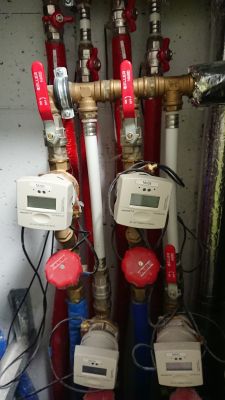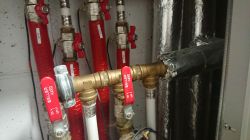piracik wrote: No matter how the flow is choked, the flow temperature should be the same.
My experience shows that the flow is important for the supply temperature, because if I did not have the right casing, the farthest radiator was noticeably cooler than those closest to the boiler through which more water was overflowing than it should have been. In other words, the farthest radiator received too little hot water and at the power input to the radiator, the plate was noticeably cooler at the valve insert, despite the fact that the radiator was open to the maximum. Only after proper blocking, the farthest radiator started to heat much more effectively.
Only with me there is no constant supply of boiler water to the heaters at a constant temperature, because the boiler is timing, so the conditions are a bit different.
piracik wrote: But on such a short section of the supply, cooling down by 30 * C is almost impossible.
In this context, reducing the temperature to such a range seems virtually impossible, and the reported boiler water temperatures of 82 degrees are virtually unrealistic at temperatures above zero.
However, in the context of the general underheating of the apartment, it is most often due to improper water flows through a specific part of the installation, because the radiators in other rooms or the neighbor consume too much water, more than the real demand of these radiators.
Although you should consider why the neighbor unscrewed the flows at home too much, he probably noticed the problems with heating himself, he started to regulate himself, which improved himself and hurt his neighbors. Maybe it is the result of a poorly designed installation.
That is why I prefer my own installation, because if necessary, I myself decide what and how to do it and I am not dependent on the good or bad will of my neighbor. If I screw up something myself, I can only blame myself, but with such joint installations, you can blame a neighbor who can completely ignore us, and without the good will of all neighbors, there may be a problem with finding a common solution, because often, where there are 6 cooks there nothing to eat





